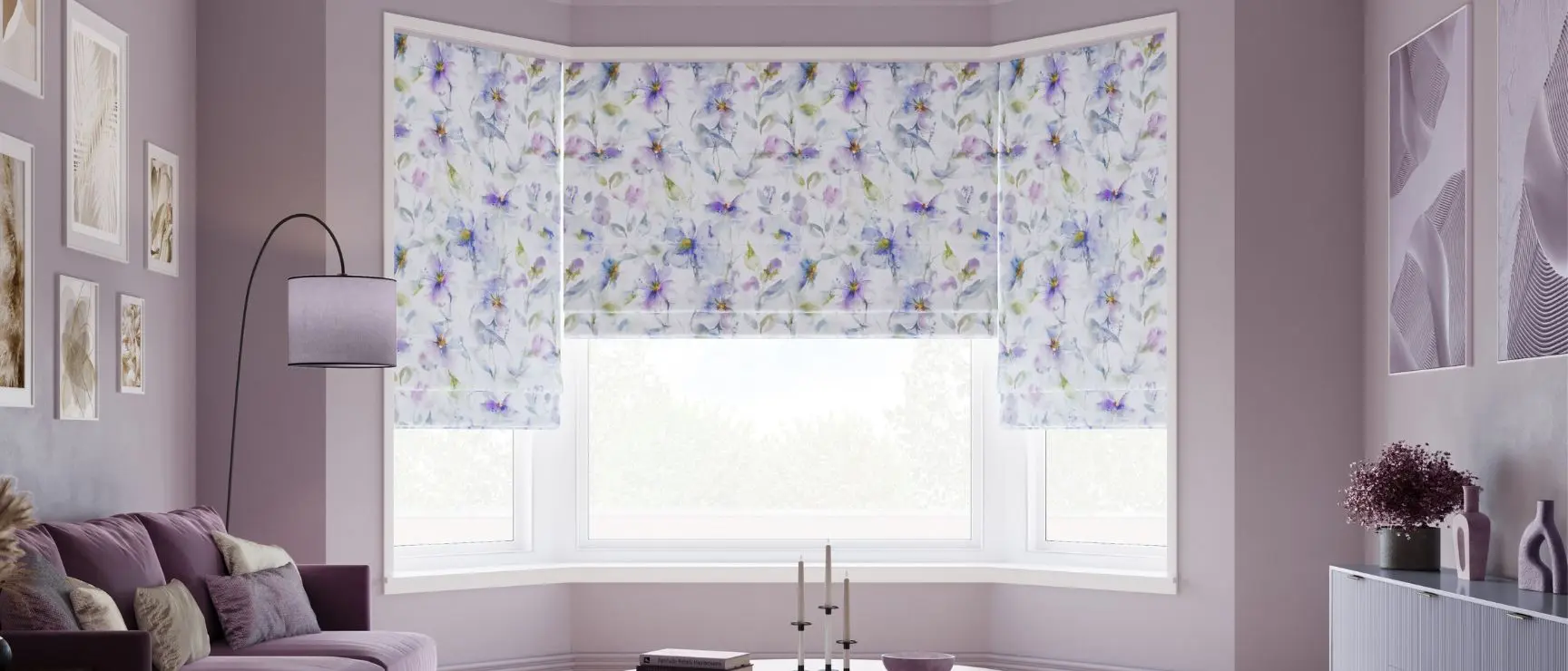Bay windows are one of the most charming features in any home, letting in light, opening up a room, and adding instant architectural interest. But finding the right blinds for them? That’s where things can get tricky.
Whether you’ve got a lovely Victorian bay, a box bay, a bow bay or an angled bay window, this guide breaks down your style and installation options.
What makes bay windows tricky?
Bay windows usually consist of three or more panes angled together, which creates either a semi-hexagonal shape or a square shape. While stunning, this layout presents a few challenges:
- Unusual angles can make it difficult to fit standard, off-the-shelf blinds cleanly.
- Multiple window panels mean more natural light, but also increased privacy and insulation considerations.
- Limited recess depth or awkward joins can complicate installation and blind movement.
The key? Choosing made to measure blinds tailored to each panel. This ensures a seamless fit, smooth operation, and a clean finish that complements the bay’s shape.
To help you get a flawless fit for your bay windows, we’ve included tips later in the guide, along with links to our expert measuring guides.
Are Roman blinds good for bay windows?


Roman blinds bring an elegant, tailored look to bay windows. They sit snugly within each section of the bay and create a cohesive, layered effect when raised or lowered.
Best for: Living rooms, bedrooms, period homes.
✅ Pros
- Softens hard angles with fabric folds
- Can customise lining - blackout lining for bedrooms or thermal lining for insulation
- Wide range of colours and prints
⚠️ Consider
- Works best when mounted inside the recess of each window pane
- Not ideal for high-moisture areas like bathrooms
Are Venetian blinds good for bay windows?
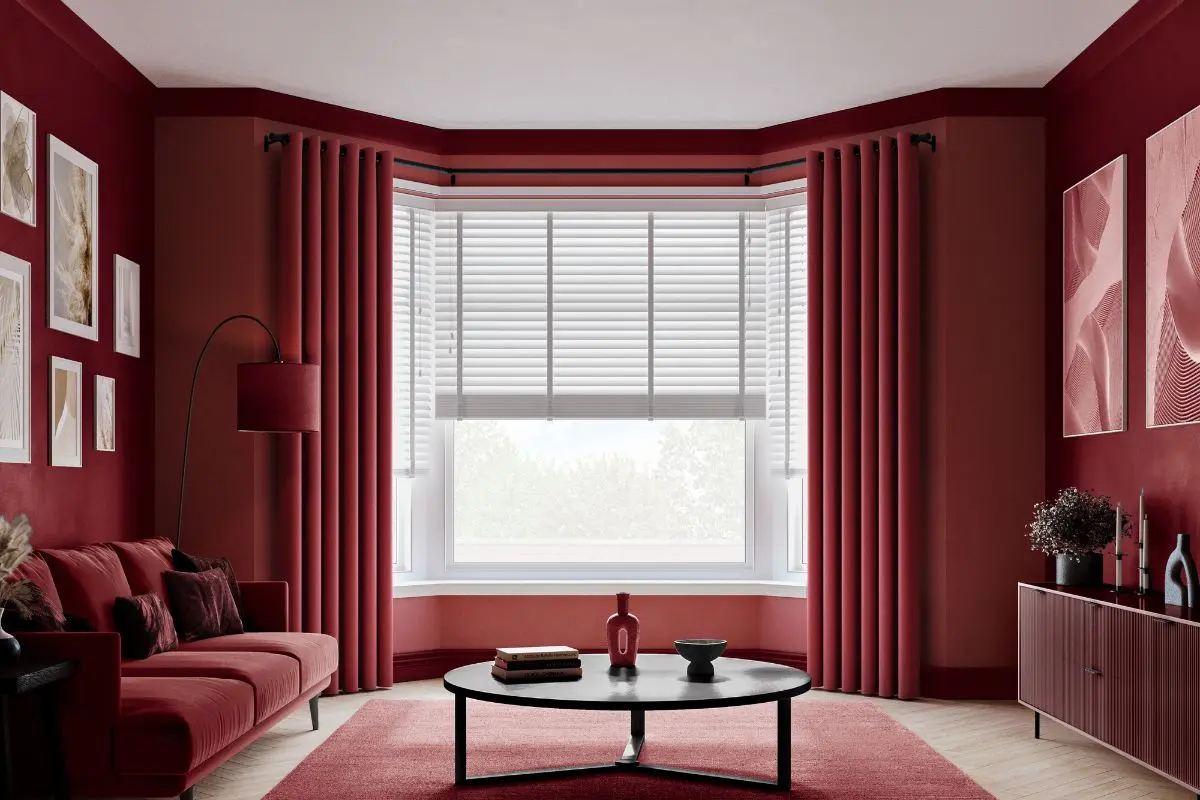

Wooden, Aluminium or faux-wood Venetian blinds are a practical and versatile option. Their tilting slats give you precise control over light and privacy—great for south-facing bays.
Best for: Kitchens, home offices, modern interiors.
✅ Pros
- Excellent light control
- Clean, modern look
- Easy to clean
- Popular amongst the UK
⚠️ Consider
- Avoid if you want a soft or layered look, slats can appear cold in cosy settings.
- Wooden Venetian blinds aren't ideal for high-moisture areas like bathrooms.
Are roller blinds good for bay windows?
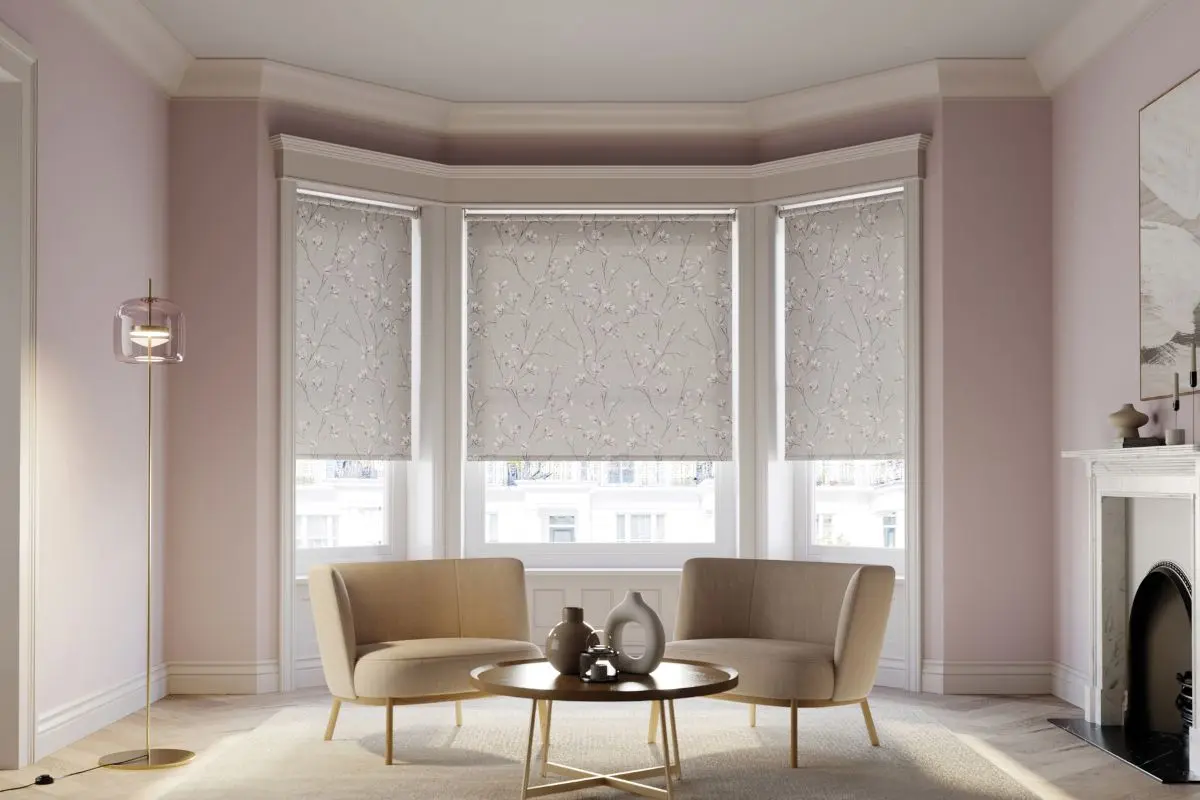

Roller blinds are a straightforward choice and work well when fitted individually in each window pane of the bay. With blackout, moisture-resistant, and thermal options available, they’re surprisingly versatile.
Best for: Budget-conscious households, minimalist interiors, children’s rooms.
✅ Pros
- Clean, unfussy look
- Wide choice, from fabric material, designs and patterns to colours and functionality
- Budget-friendly
⚠️ Consider
- Less flexible than Venetians in terms of light filtering
Are vertical blinds good for bay windows?
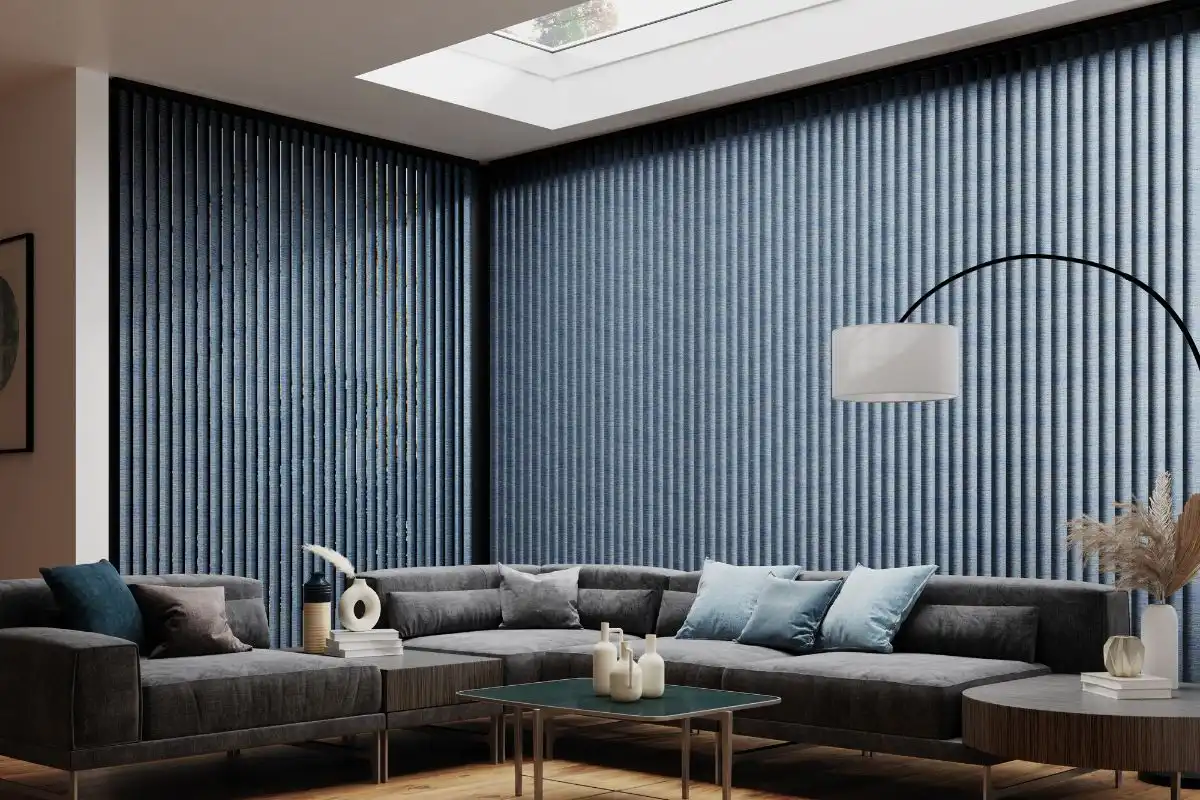

Vertical blinds are a practical and stylish solution for wide or tall bay windows, especially those that span floor to ceiling. With rotating fabric slats, they offer excellent control over light and privacy—making them ideal for bright, open-plan spaces or home offices.
Best for: Conservatories, home offices, large or floor-to-ceiling bay windows
✅ Pros
- Great for covering wide or tall bay windows
- Excellent light and privacy control
- Easy to maintain and clean
- Available in blackout, moisture-resistant, and thermal fabrics
⚠️ Consider
- Slats may move in drafts or if windows are open
- Can look more functional than decorative, less suited to cosy or traditional interiors
- Requires enough space for the headrail across the full width of the bay
Are day and night blinds good for bay windows?
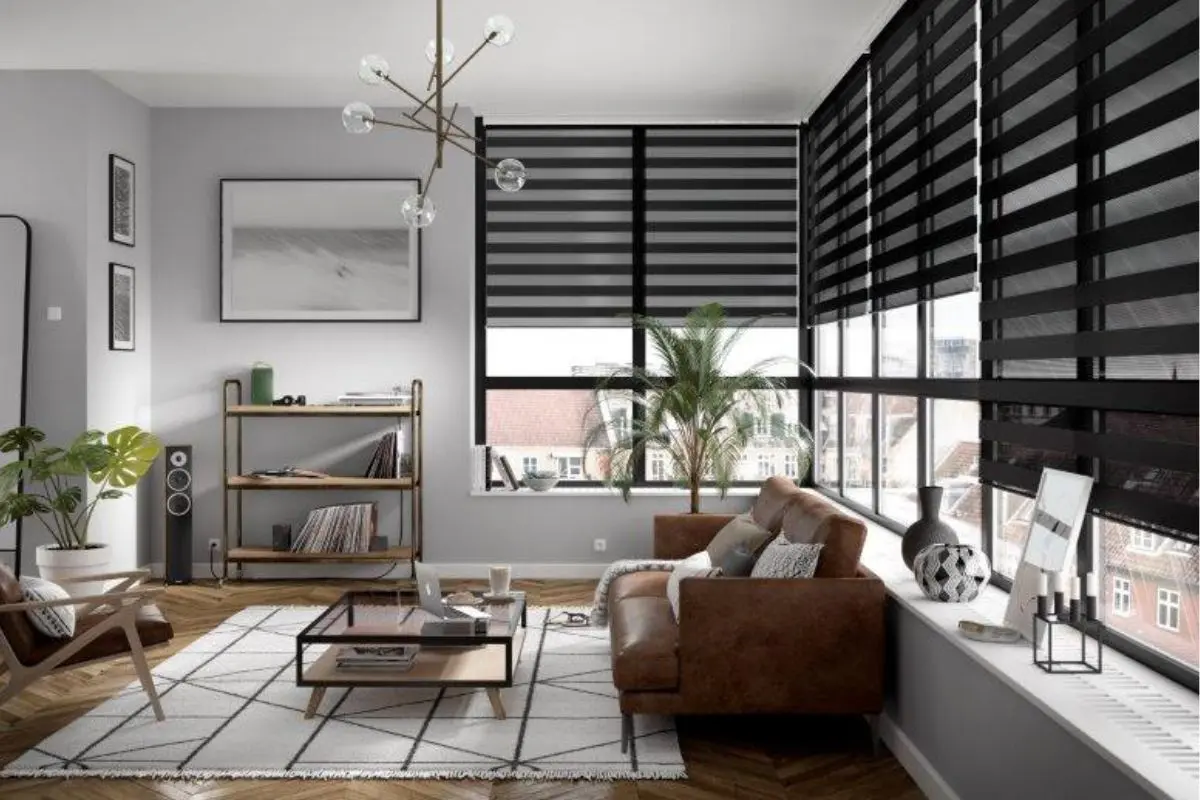

Day and night blinds alternate sheer and opaque stripes for ultimate control over privacy and daylight. They work beautifully in bays where you want to enjoy natural light without exposing your interior to the street.
Best for: Street-facing bays where privacy is key without sacrificing daylight.
✅ Pros
- Stylish and modern
- Great privacy control during the daybedroom
⚠️ Consider
- Not a full blackout blind if you need blinds for a bedroom bay window
- May look too contemporary for traditional homes
Are shutter blinds good for bay windows?


Shutter blinds (or plantation shutters) are a luxurious option that adds both style and substance to bay windows. Custom-fitted to the exact shape of your window, they offer exceptional privacy, light control, and insulation—all while enhancing kerb appeal.
Best for: Period homes, street-facing bays, or anyone after a premium finish.
✅ Pros
- Built-in, made-to-measure look
- Excellent privacy with top/bottom louvre control
- Helps insulate against heat and cold
- Adds value to your home
⚠️ Consider
- Higher upfront cost
- Installation takes longer than standard blinds
Are no drill blinds suitable for bay windows?
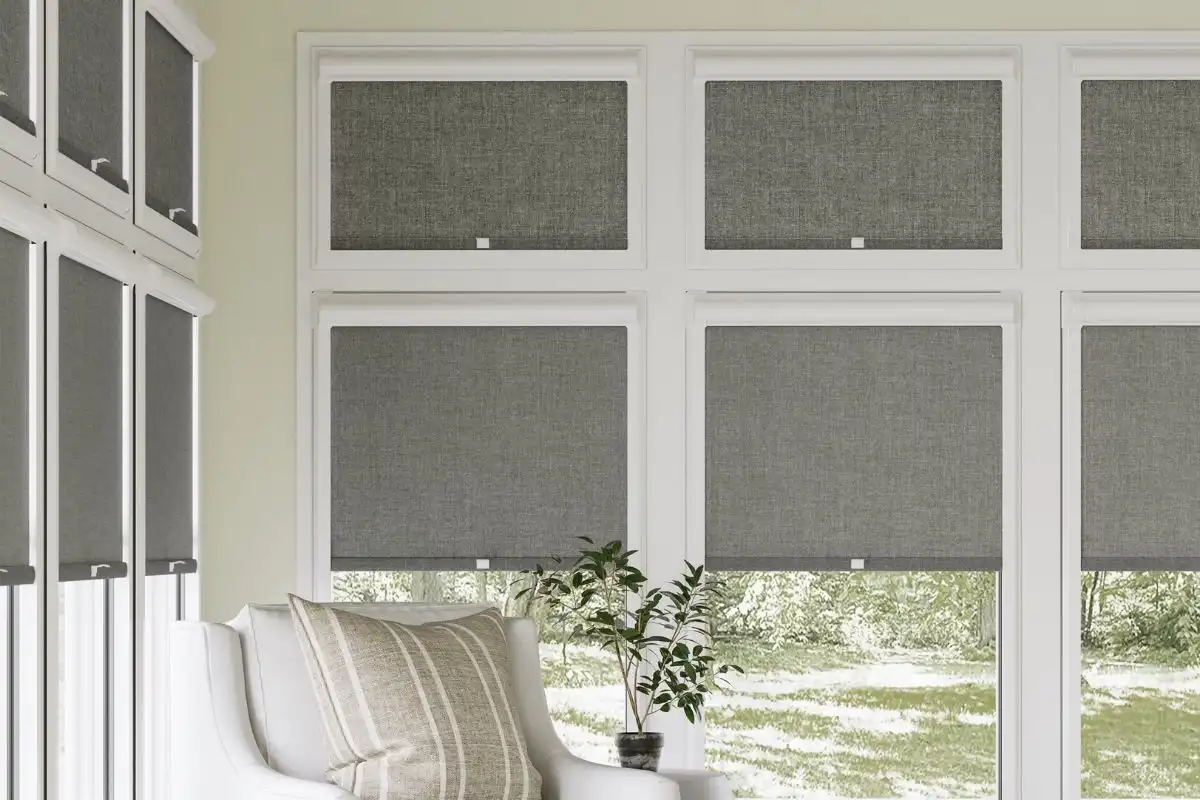

Best for: UPVC windows, rental homes, or anyone wanting easy installation.
If you’re looking for blinds that don’t require screws or drilling into your window frames, there are several no-drill options ideal for bay windows. These are clean, modern, and incredibly easy to install—making them especially popular in newer builds or with DIY-averse homeowners.
✅ No Drill Blinds Options That Work for Bay Windows:
Stick On Blinds
These use a strong adhesive strip to attach directly to the glass. Super slimline and ideal for shallow recesses.
Clip Fit Blinds
These clip into the rubber gasket of your UPVC frame. Minimal and neat, without affecting the structure.
Perfect Fit Blinds
A full-frame blind that clips into the window beading. Great for tilt-and-turn or inward-opening windows.
Perfect Fit Shutters
A newer innovation offering the elegant look of shutters with a no-drill frame. Ideal for bay windows where traditional shutter installation is tricky.
✅ Pros
- Quick and easy to install
- No damage to window frames
- Sleek, integrated look
- Easy to remove, ideal for renters
- One of the better options for bedrooms, as they have less light seepage
- Great if you have a tricky recess
⚠️ Consider
- Most no drill blinds (excluding stick fit) aren't suitbale for wooden windows
- Not always compatible with deeper sills or unusual trims
❌ No Drill Options That Don’t Work on Bay Windows:
Twist Blinds
They rely on a tensioned mechanism where the blind is inserted between flat surfaces, this doesn’t work well with the angles and depth variations of bay windows.
Key condiserations before ordering blinds for bay windows
Accurate Measurements
Bay windows have unique angles and dimensions, so measuring each section individually is crucial. To ensure a flawless fit and smooth operation without clashing, follow our expert measuring guides:
Measuring blinds for angled bay windows: Learn how to account for angles and depth.
Measuring blinds for square bay windows: Discover how to overlap for a perfect finish.
Factoring Obstructions
You'll need to factor in window handles, vents, and other protrusions when measuring and ordering. You'll find more details on this in our measuring guides.
Interior Designer Tips On Styling Bay Windows
Layering Is Key to a Luxurious Look
The most beautifully dressed bay windows often feature layers. Combining blinds with curtains or voiles not only adds visual softness but also creates a sense of depth and dimension in the space.
Think of the blind as your tailored, functional base—ideal for light control and privacy, and the curtain as the draped, decorative flourish that brings elegance and warmth.
Designer tip: Floor-length curtains in a coordinating or contrasting fabric can help elongate the window and make ceilings appear taller.
Choose Light Colours to Keep the Space Airy
Bay windows naturally draw in more light, and your window treatment should enhance that. Lighter tones—think soft whites, greys, oatmeal, or warm neutrals—reflect sunlight and help maintain that open, spacious feel.
Designer tip: If your bay window is in a smaller room or faces a garden, using pale hues helps blend indoor and outdoor light beautifully.
Coordinate Fabrics for a Cohesive Feel
With multiple blind panels across a bay, cohesion is crucial. Choosing matching or thoughtfully coordinated fabrics ensures that the entire bay reads as a single design feature, not a patchwork.
Designer tip: If you’re mixing textures (say, linen blinds with velvet curtains), keep the colour palette tight to maintain harmony.
Use thermal lining in period homes and older properties
In period homes or older properties, bay windows are often a source of heat loss. Opting for thermally lined blinds (and curtains, if layering) doesn’t just look more substantial, it dramatically improves insulation and energy efficiency.
Designer tip: Thermal lining also gives fabric blinds a more luxurious drape and appearance, especially in heavier materials like Roman or layered roller styles.

